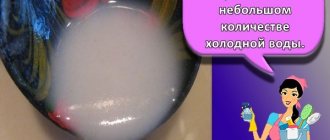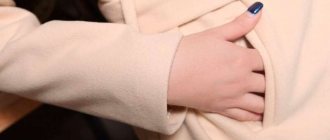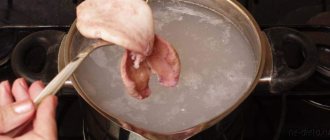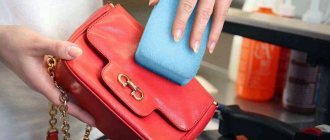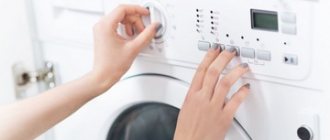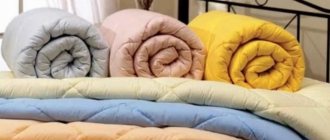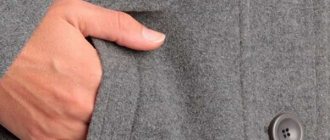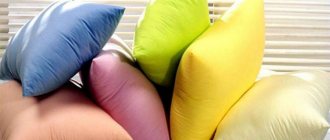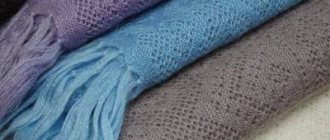Large soft toys are not only children’s friends, but also components of the original interior.
Plush products look very cute, but they collect a lot of dust and are difficult to clean. A separate problem is presented by those that do not fit in the washing machine.
You can even clean large objects manually using homemade recipes, a steam generator and household chemicals.
We'll tell you in this article how to wash a large soft toy at home by hand.
Washing problems
All soft toys accumulate dust and need cleaning. If the manufacturer indicates on the product label that it can be washed in a machine, the problem can be easily solved. But with very large products this will not work.
When choosing a cleaning method, you must take into account that aggressive compounds cannot be used for a number of reasons:
- caustic substances can damage the material;
- they can cause allergies;
- they are undesirable to use in a children's environment;
- not suitable for delicate cleaning.
Time-tested home methods, using household appliances and store-bought cleaning products will help you tidy up a large toy. For any type of cleaning, it is advisable that the first step is vacuuming.
General rules for washing soft toys are discussed here.
Are they dirty?
Watch a child play with a teddy bear, bunny or rag doll. He not only rolls the toy on the floor, there are also hugs and kisses, and a taste test. What adds to the problem is that no matter how cleanly you tidy your apartment, the ubiquitous dust still penetrates the premises and settles on surfaces. It is not always possible to notice how gradually a toy loses its brightness of color under a layer of dust.
Children spend a lot of time with soft toys, so these products will definitely need to be washed.
In addition, children often do not let go of their favorite soft toys for literally a minute. This means that the soft playmate will probably swim in a puddle, roll around in the sandbox and smear himself on the grass. As you can see, periodic washing is simply necessary for such toys. Otherwise, the germs along with the dirt will transfer to the child.
Soft toys should be washed as they become dirty. If your child really loves such an item, then washing should be done at least every 2-3 weeks. Before you start cleaning, look at the toy label: care instructions are indicated there.
Unfortunately, dust mites are permanent residents of soft toys, and they can cause allergies in a child.
How to do it manually?
Hand washing can consist of several parts:
- careful surface cleaning of the material;
- complete wash of the entire item, including stuffing;
- treatment of particularly contaminated areas and stain removal.
In some cases, brushing just the outer fur of your furry friend is sufficient.
To wash by hand you will need:
- a large container in which the entire thing would fit;
- universal detergent in gel form (if the fur of a soft animal is snow-white, you can use a detergent intended for white clothes);
- sponge;
- laundry soap;
- stain remover if there are particularly dirty places;
- water.
Work order:
Fill the container intended for washing with water at a temperature of up to +30ºС. The exception is for products whose label indicates a higher temperature is permitted by the manufacturer.- Detergent is diluted in water.
- If there are dirty areas on the toy, they are soaped with laundry soap using a sponge. The stains are treated with a stain remover, for example, Vanish.
- Wash the toy with a sponge.
- If the goal is a complete wash, including the filling, then you need to squeeze and unclench the product with your hands so that the filling is also washed.
- It is necessary to rinse the item thoroughly, changing the water frequently.
If the toy cannot be wetted entirely, you can wash only the soiled areas, avoiding deep soaking.
Careful surface washing is especially important in cases where the filler is sensitive to moisture. This applies, for example, to anti-stress filler.
This video will tell you about wet cleaning of a large soft toy:
Hand washing soft toys - how to do it correctly?
Small toys that dry quickly, can be hand-wrung, and do not have a lot of small parts can be washed by hand in the following way:
- Pour warm water into a bowl.
- We soap the toys with baby soap and leave them soaked for 10 minutes.
- If necessary, we wash it with a brush (and if the texture of the toy allows).
- We rinse the toys, wring them out, hang them to dry, put them on a radiator, or “spread them” on a dryer under the sun.
And remember a few rules for washing toys:
- Toys filled with balls (anti-stress and for developing fine motor skills) are cleaned only using the wet cleaning method. It is strictly not recommended to wash them in a machine: even the seams that seem strong at first glance can come apart during the washing process. As a result, you can ruin both the toy and the car.
- If you have batteries (musical toys), first carefully rip the seam and remove the batteries. We sew it up again (with a large stitch so that the filling does not fall out), wash it in the most appropriate way, and dry it. Next, we put the batteries back in place and sew them up again.
- Before washing, treat greasy stains on toys with a sponge soaked in regular medical alcohol or with dishwashing detergent.
- Toys made of knitwear and velor (without accessories, balls, batteries and plastic parts) can be washed in a machine, packed in a special mesh designed for washing delicate items of clothing. As for the bows, hats and other similar details sewn to the toy, they will also remain in the mesh if they do come off.
- Washing/cleaning toys with chemicals is prohibited. Only baby shampoo or baby/laundry soap.
- After cleaning/washing, the toy should be rinsed/cleaned well so that no soap, powder or soda remains on it.
- Not all musical toys can have the “stuffing” out of them. There are also options where the musical blocks stretch along the entire length, including the legs and head of the toy. In this case, it is simply impossible to remove the block without damaging the product. Therefore, the cleaning method is only dry or wet.
Don't forget to regularly treat all toys using a special bactericidal lamp.
Removing stains using folk remedies
The uniform dusting of the toy allows you to combine dry cleaning with surface washing. But if there are stains on the item, they need to be treated before washing.
A simple folk method will do:
Moisten the stained area with a sponge.- The soap is foamed and gently applied to the stain.
- Rub the dirty area with a sponge.
- After treatment, the remaining soap is washed off with water.
If a bear, dog or elephant not only decorates the interior, but is also a baby’s favorite, the stains can be removed with a children’s stain remover. After leaving for several minutes, the product is washed off.
To remove stains from children's toys, you should not use chemicals (gasoline, white alcohol, kerosene, etc.) .
Dry cleaning
If the toy is made of materials that cannot be wetted or has glued elements, water cannot be used at all for cleaning.
For dry cleaning you will need:
- a vacuum cleaner with an attachment for cleaning small items;
- soda (the amount depends on the size of the product, but not less than a couple of packs);
- a large plastic bag in which the entire item would fit;
- napkins.
The amount of soda is determined taking into account the fact that the item must be completely sprinkled with it. If there is even more of it, it’s not scary; for cleaning it’s more of a plus than a minus. Instead of soda, you can use potato starch.
Cleaning procedure:
- Thoroughly vacuum the product from all sides.
- Place the toy in a large bag prepared in advance and sprinkle it with soda.
Squeeze out excess air from the bag.- The top of the bag must be tied.
- The bag must be shaken and squeezed vigorously so that the toy comes into contact with the soda on all sides.
- Set the bag aside for an hour. During this time, the soda will absorb all the contaminants.
- Once again actively knead and shake the bag.
- Get a toy.
- Use a napkin slightly moistened with water to go over the dirty places on the material. If necessary, they should be rubbed.
- If there are uncleaned areas, then you need to add soda to them and rub some more.
- Use a dry cloth to shake off the baking soda from the surface.
- Vacuum the product.
The cellophane bag for processing must be chosen to be dense and able to withstand the vigorous impact of the cleaning process.
Steam generator application
If you have a steam cleaner in your home, tidying up a large toy will not be a problem. Steam not only allows you to refresh the material, but also removes dirt, fights mold and other pathogens.
When steaming, avoid contact with surfaces that may become deformed. This group includes natural materials (for example, linen, wool).
If the toy has a built-in electrical device (clock, music generator, etc.), you should not use a steam cleaner. Without damaging the product, this can only be done after removing the electronic unit.
Before using the steam generator, the toy must be vacuumed. This will improve processing efficiency.
Drying rules
Just washing a large toy is not enough. It is very important to dry it properly. It is important to follow these rules:
Ensure good ventilation of the room in which the item will be dried. Or choose to dry it in the fresh air.- It is prohibited to use heating devices or open fire for drying purposes.
- Quite lightweight plush friends made from artificial materials can be hung to dry.
- If there is a possibility that the product may lose its shape, it should be dried on a horizontal surface with a moisture-absorbing terry towel underneath. When they get wet, the towels are changed.
- During the drying process, the product must be shaken and turned over so that the stuffing dries evenly.
After completely drying the toy, it is recommended to comb it to give it a more attractive appearance.
Everything about machine washing soft toys at home
Rules for machine washing toys:
- Be sure to examine the tag on the toy. Not every item is machine washable.
- We check the toy for music blocks, batteries, ball fillers, and loose seams. We take out everything that can be pulled out.
- We put the toy in a special net.
- Wash on delicate cycle.
- We use only baby powder!
- Increase the number of rinses by at least 1 rinse.
- The water temperature is no higher than 30 degrees. If there is a risk that there are already dust mites in the toy - from 60 degrees (after studying the label!).
- Do not wring out the toy in the machine so as not to damage it and maintain its shape. We simply drain the water and “wring out” the toy itself using a terry towel.
- We dry toys hanging or on a radiator if the machine does not have such a function. We dry knitted toys only in a horizontal position.
Disinfection methods
Refreshing a toy means not only improving its appearance, but also disinfecting it. The simplest solution is exposure to sunlight in summer and frost in winter .
Low temperatures are harmful to most bacteria and viruses. To combat them, it is quite enough to simply place the toy on the balcony in winter for the whole day.
Additionally, you can treat the fur with a vinegar solution:
- Mix ½ cup vinegar with 1 cup water.
- Pour the solution into a spray bottle.
- Treat the toy from all sides.
- Set it aside to air and dry completely.
Recommendations
make washing toys by hand easier :
- All manipulations must be carried out using rubber gloves.
- If there is some kind of electronic unit inserted inside the toy (for music, lighting, etc.), it must be removed before washing.
- Cleaning must be done very carefully, especially around small parts (eyes, nose) and those that are glued rather than sewn.
- Before washing, make sure that all seams are well stitched and small parts on the material are carefully secured.
- Toys that need washing should not be stored together with new and clean ones.
If a toy, even after careful treatment, becomes stained and fades heavily, this indicates its low quality and the use of questionable materials and dyes. There’s definitely no point in regretting something like this.
Cleaning large items
How to wash large soft toys? Several cleaning options are allowed here:
- try to place the product in a washing machine;
- clean with your own hands;
- hand over the soft product to a cleaning company.
If the soft toy is quite dusty and so dirty that you can’t pick it up with your hands, then the product should be sent to a washing machine (if the children’s product, of course, fits in the drum compartment). Along with a large soft baby product, you will need to put several tennis balls in the drum of the machine, which will bounce off the walls of the drum throughout the wash, thereby preventing the filling material inside the product from clumping. If the toy does not fit into the drum compartment, and it is not possible to dry clean the product, then you should cut open the toy, remove the filling material and send the product to a washing machine. After the toy has dried thoroughly, you will need to refill the product with filling material and sew it up.
If a large soft toy does not have accessories (bows, eyes and other elements), then such a product can be completely immersed in water. The bathing tank should be filled with lukewarm water, add a little baby washing powder, and then immerse soft toy products in it. The product must be cleaned of dirt using a compacted sponge. After washing, the toy must be lightly wrung out and placed to dry on a horizontal surface. The only drawback of hand washing is that large soft items take a very long time to dry. And due to prolonged drying, the toy may acquire a sharp, unpleasant smell of dampness, which is very difficult to remove.
Quite often, instead of completely soaking, the method of wet cleaning of large toys is used, without touching the filling material inside the product. To do this, fill a deep container (an ordinary basin will do) with lukewarm water, dilute a little liquid powder in the liquid and stir until foam appears. The foam is rubbed into the surface of the product using a soft sponge. After this, the foam composition will need to be removed with a clean, damp washcloth. Then the large soft toy will need to be thoroughly dried with a towel or hair dryer.
